Forklifts and Safe Operation and Maintenance Tips
Date Posted:5 November 2024
By ensuring that operators are well-trained, conducting regular pre-operation inspections, and following safety guidelines, businesses can reduce the likelihood of accidents.
Forklifts are essential pieces of equipment in warehouses, construction sites, and industrial facilities. They enable the safe and efficient movement of heavy loads, ensuring smooth operations in material handling and logistics. However, forklifts also pose significant safety risks if not operated and maintained properly. To prevent accidents and ensure the longevity of the equipment, it’s crucial to understand safe forklift operation and implement regular maintenance practices.
In this blog, we’ll delve into the key safety considerations for forklift operation and provide essential maintenance tips to keep your equipment in top condition.
Importance of Safe Forklift Operation
Operating a forklift requires skill, awareness, and adherence to safety standards. Forklift-related accidents can result in serious injuries or even fatalities, as well as damage to property. By following safety protocols and encouraging safe practices, workplaces can significantly reduce the risks associated with forklift operation.
Forklift Safety Guidelines
Here are some key safety tips for operating forklifts:
1. Ensure Operator Training and Certification
One of the most critical safety steps is ensuring that all forklift operators are properly trained and certified. Untrained or inexperienced operators are at higher risk of causing accidents. Training should cover:
- Proper operation techniques
- Load capacity and stability
- Hazard recognition
- Emergency procedures
Operators should also be familiar with the specific model of forklift they are using, as features and controls can vary.
2. Conduct Pre-Operation Inspections
Before operating a forklift, operators should conduct a thorough inspection to ensure the equipment is in safe working condition. A pre-operation checklist may include:
- Checking fluid levels (oil, hydraulic fluid, and coolant)
- Ensuring that tires are in good condition and properly inflated
- Inspecting forks for cracks or wear
- Testing brakes, lights, and horn
- Checking that seatbelts are functioning properly
Identifying and addressing any issues before starting the forklift can prevent accidents and mechanical failures.
3. Adhere to Load Capacity Limits
Exceeding the forklift’s load capacity is a common cause of accidents. Overloading can make the forklift unstable and lead to tipping over. Operators should always adhere to the manufacturer’s specified load capacity, which can be found on the data plate of the forklift.
It’s also important to distribute the load evenly and ensure it is secured before lifting. Uneven or unsecured loads increase the risk of losing control while operating the forklift.
4. Maintain Clear Visibility
Proper visibility is crucial when operating a forklift. Operators should ensure they have a clear view of the path ahead, particularly in tight or congested areas. When carrying large loads that obstruct forward visibility, operators should drive in reverse.
Additionally, the use of mirrors and cameras can enhance visibility, especially when manoeuvring in complex or confined spaces.
5. Operate at Safe Speeds
Speeding while operating a forklift can increase the risk of accidents, especially when navigating corners or uneven surfaces. Operators should always follow the facility’s speed limits and avoid sudden stops or sharp turns. It’s important to drive at a speed that allows full control of the forklift.
6. Be Cautious on Ramps and Inclines
Driving a forklift on ramps or inclines presents additional safety challenges. Operators should:
- Travel slowly and cautiously
- Keep the load uphill when going up or down slopes
- Avoid turning on a slope, as this can cause the forklift to tip over
When carrying loads on inclines, the forklift should face forward when going uphill and in reverse when going downhill.
7. Avoid Horseplay and Distractions
Operating a forklift requires full attention. Distractions, such as using a mobile phone, can lead to dangerous mistakes. Similarly, horseplay or reckless behaviour should never be tolerated. Operators should remain focused on the task at hand and avoid any behaviour that could compromise safety.
Forklift Maintenance Tips
Regular maintenance is essential to ensure the longevity of your forklift and reduce the risk of mechanical failures. Here are some essential maintenance tips:
1. Develop a Routine Maintenance Schedule
Forklifts should undergo regular inspections and servicing to identify and address potential issues before they lead to breakdowns. A routine maintenance schedule should include:
- Regular oil and filter changes
- Battery inspections and maintenance (for electric forklifts)
- Checking hydraulic systems for leaks
- Lubricating moving parts
- Inspecting and replacing worn tires
Following the manufacturer’s recommended maintenance schedule will keep the forklift running smoothly and reduce the likelihood of unexpected downtime.
2. Monitor Fluid Levels
Checking and maintaining fluid levels is critical to keeping the forklift’s engine, transmission, and hydraulic systems in good condition. Low fluid levels can cause overheating or damage to internal components, leading to costly repairs.
Operators should regularly check fluid levels for:
- Engine oil
- Transmission fluid
- Hydraulic fluid
- Brake fluid
- Coolant
Topping up fluids as needed and addressing any leaks immediately can prevent more significant issues down the line.
3. Check Tire Condition
Tires are a critical component of forklift safety and performance. Worn or underinflated tires can compromise the forklift’s stability and handling. Inspect tires for wear, punctures, or damage, and ensure they are properly inflated according to the manufacturer’s specifications.
Solid tires should be replaced when they are severely worn, while pneumatic tires should be checked for proper inflation and any signs of damage.
4. Ensure Battery Health (For Electric Forklifts)
For electric forklifts, maintaining the health of the battery is essential for reliable operation. Operators should:
- Regularly check battery water levels and top up with distilled water as needed
- Clean the battery terminals to prevent corrosion
- Ensure the battery is charged properly, avoiding deep discharges or overcharging
A well-maintained battery will extend the lifespan of the forklift and reduce the risk of power failures.
5. Inspect Forks for Wear
The forks of a forklift are subject to heavy use and wear over time. Regularly inspect the forks for cracks, bends, or excessive wear. Any damaged or worn forks should be repaired or replaced to prevent accidents, such as loads slipping or the forklift becoming unbalanced.
6. Test the Braking System
The braking system is one of the most critical safety features of a forklift. Regularly testing the brakes and ensuring they are in good working condition is essential for preventing accidents. If the brakes feel spongy or unresponsive, they should be inspected and repaired immediately.
Forklifts are invaluable tools in many industries, but they also come with significant safety risks if not operated and maintained properly. By ensuring that operators are well-trained, conducting regular pre-operation inspections, and following safety guidelines, businesses can reduce the likelihood of accidents. Additionally, implementing a comprehensive maintenance schedule will keep forklifts in top condition and extend their lifespan.
At Verdex, we provide high-quality forklifts and material handling equipment designed to meet the safety and operational needs of businesses across Australia. Explore our range to find reliable and durable solutions for your workplace.

































































































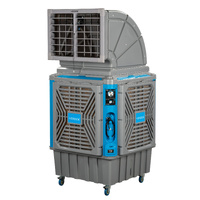







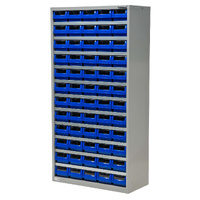






















 Trolleys & Hand Trucks
Trolleys & Hand Trucks Cage Trolleys
Cage Trolleys Cleaning Carts & Trolleys
Cleaning Carts & Trolleys Construction Trolleys
Construction Trolleys Custom Trolleys
Custom Trolleys Hand Trucks & Dollies
Hand Trucks & Dollies Laundry/Linen Trolleys
Laundry/Linen Trolleys Lifting Trolleys
Lifting Trolleys Order Picking Trolleys
Order Picking Trolleys Panel Cart Trolleys
Panel Cart Trolleys Platform Trolleys
Platform Trolleys Powered Trolleys
Powered Trolleys Shelf & Tiered Trolleys
Shelf & Tiered Trolleys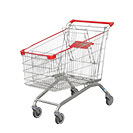 Shopping Trolleys
Shopping Trolleys Stainless Steel Trolleys
Stainless Steel Trolleys Tool Trolleys
Tool Trolleys Utility & Service Carts
Utility & Service Carts Lifting & Handling Equipment
Lifting & Handling Equipment Forklift Attachments
Forklift Attachments Jib Attachments
Jib Attachments Lifting Hoists & Pallet Hooks
Lifting Hoists & Pallet Hooks Load Skates & Tow Tugs
Load Skates & Tow Tugs Manual Stackers & Lifters
Manual Stackers & Lifters Pallet Jacks
Pallet Jacks Pallet Lifters
Pallet Lifters Pallet Rotators & Dispenser
Pallet Rotators & Dispenser Powered Pallet Trucks & Electric Lifters
Powered Pallet Trucks & Electric Lifters Scissor Lift Trolleys and Tables
Scissor Lift Trolleys and Tables Conveyor Equipment
Conveyor Equipment Conveyor Frames & Stands
Conveyor Frames & Stands Roller & Skate Conveyors
Roller & Skate Conveyors Ladders & Access Equipment
Ladders & Access Equipment Container & Yard Ramps
Container & Yard Ramps Ladders & Step Stools
Ladders & Step Stools Work Platforms & Crane Cages
Work Platforms & Crane Cages Drum Handling Equipment
Drum Handling Equipment Drum Storage & Bunding
Drum Storage & Bunding Drum Trolleys & Lifters
Drum Trolleys & Lifters Forklift Drum Handling
Forklift Drum Handling Waste Handling & Bins
Waste Handling & Bins Bin Lifters & Tippers
Bin Lifters & Tippers Plastic Waste & Wheelie Bins
Plastic Waste & Wheelie Bins Steel Waste & Tipping Bins
Steel Waste & Tipping Bins Waste Carts
Waste Carts Dangerous Goods Storage & Spillage
Dangerous Goods Storage & Spillage Aerosol Cans Storage Cages
Aerosol Cans Storage Cages Bunded Pallets & Storage
Bunded Pallets & Storage Corrosive Goods Storage Cabinets
Corrosive Goods Storage Cabinets DG Storage & Trolleys
DG Storage & Trolleys Flammable Liquid Cabinets
Flammable Liquid Cabinets Forklift Gas Storage Cages
Forklift Gas Storage Cages Site Storage
Site Storage Spill Kits
Spill Kits Shelving & Storage Equipment
Shelving & Storage Equipment Stillage & Transport Cages
Stillage & Transport Cages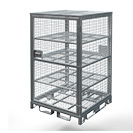 750 Series Cage Configurations
750 Series Cage Configurations Heavy Duty Cabinets
Heavy Duty Cabinets Heavy Duty Shelving
Heavy Duty Shelving Mega Bins & Pallets
Mega Bins & Pallets Packing & Workbenches
Packing & Workbenches Parts Trays & Stor-Pak Bins
Parts Trays & Stor-Pak Bins Pegboard & Louvre Panels
Pegboard & Louvre Panels Plastic Bins & Crates
Plastic Bins & Crates Plastic Handling Solutions Bins
Plastic Handling Solutions Bins Plastic Pallets
Plastic Pallets Stack & Nest Bins
Stack & Nest Bins Pallet Racking Accessories
Pallet Racking Accessories Workplace Equipment
Workplace Equipment Modular Workbenches
Modular Workbenches Electric Height-Adjustable Workbenches
Electric Height-Adjustable Workbenches Floor Matting
Floor Matting General Workplace Equipment
General Workplace Equipment Industrial Weighing Scales
Industrial Weighing Scales Packaging Machinery
Packaging Machinery Stationery Cupboards
Stationery Cupboards Storage and Stillage Cages
Storage and Stillage Cages Tool Trolleys
Tool Trolleys Tooling Cabinets
Tooling Cabinets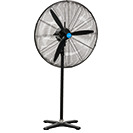 Workshop Fans and Coolers
Workshop Fans and Coolers Safety Barriers, PPE & Signage
Safety Barriers, PPE & Signage Barriers & Bollards
Barriers & Bollards First Aid Equipment
First Aid Equipment Gloves, Knives and PPE
Gloves, Knives and PPE Signage
Signage Cleaning & Site Supplies
Cleaning & Site Supplies Cleaning Equipment
Cleaning Equipment Cleaning Trolleys
Cleaning Trolleys Rubbish Bins
Rubbish Bins Signs & Traffic Supplies
Signs & Traffic Supplies Construction Equipment
Construction Equipment Construction Trolleys
Construction Trolleys Waste Handling
Waste Handling General Site Equipment
General Site Equipment Concrete Equipment
Concrete Equipment Site Storage
Site Storage Lifting Equipment
Lifting Equipment Verdex Specials
Verdex Specials Blue Plastic Stack & Nest Crate
Blue Plastic Stack & Nest Crate
 Heavy Duty Steel Longspan Shelving
Heavy Duty Steel Longspan Shelving










